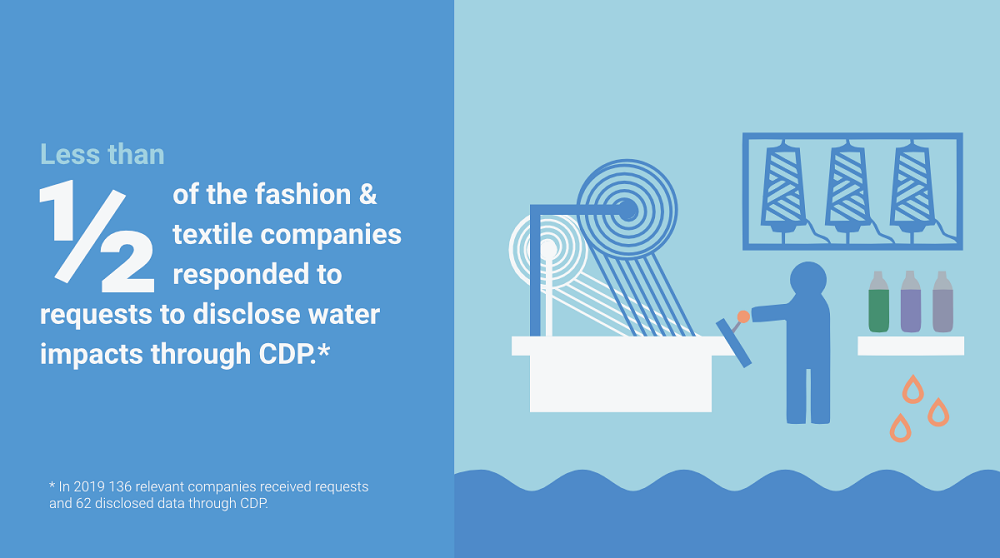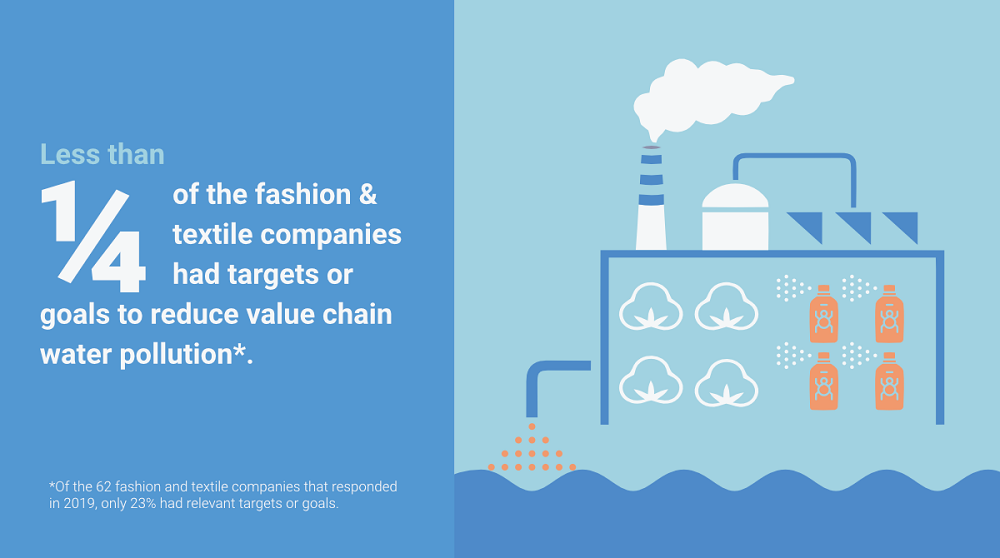Interwoven risks, untapped opportunities
The business case for tackling water pollution in apparel value chains
Water pollution is an invisible crisis posing serious risks to societies, economies and to business.
The apparel and textiles sector has a vital role to play in reducing water pollution at the scale and pace urgently needed. However, many companies in the sector are blind to the business risks posed by water pollution across their whole value chain, and are therefore not acting with the urgency required. Our new report reveals the tangible business case for immediate action – to recover better from COVID-19 and build a resilient and sustainable fashion industry.
Water pollution exacerbates our global freshwater shortage, damages the ecosystems that sustain us, and harms the communities and business operations that rely on a stable safe water supply.
The apparel and textile sector as a whole contributes greatly to excessive consumption and pollution of water resources, from the production of raw materials through to the use and ultimate disposal of products. Companies within the sector must acknowledge that their environmental and social responsibility extends far beyond their direct opertions to cover their whole value chain.
Water pollution poses a material risk to these companies, be it through regulatory penalties and shutdowns, losing their social license to operate or damaged brand image.
Yet, most are not demonstrating a comprehensive awareness or understanding of the materiality of these risks. Only 21% of the largest 100 apparel and textile companies by market cap reported water-related data through CDP in 2019, and the majority of reporting companies failed to identify or assess water pollution risks beyond the wet processing and manufacturing stages of the value chain.

With these risks come exciting opportunities for companies, and the firms financing them, to take action, increase their resilience, and open the door to financial rewards.
Some companies are beginning to understand this. But the majority hugely underestimate the business benefits of taking action. By keeping up with regulation and policy shift, responding to increasing consumer consciousness, and meeting investor demand and awareness, companies can seize the opportunities of early action.

Investors, regulators, purchasing organizations and consumers alike are mounting pressure on apparel and textiles companies to transparently measure, manage and reduce their impact on the water environment across their whole value chain.
By reporting water-related risks, targets and opportunities, engaging with value chain stakeholders, and fully integrating sustainability into COVID recovery plans, companies can get ahead of the curve.
Those that act quickly, and transparently disclose on progress, will gain a competitive advantage and become leaders of the renewed fashion industry.
